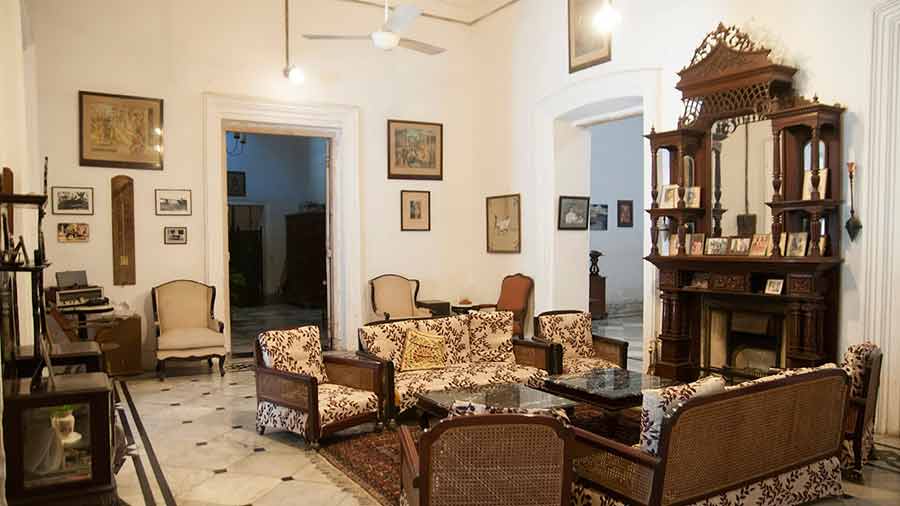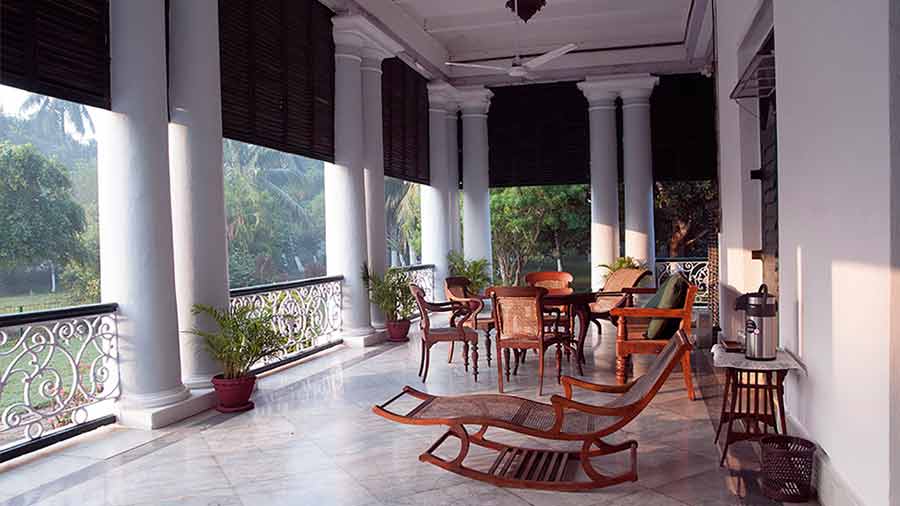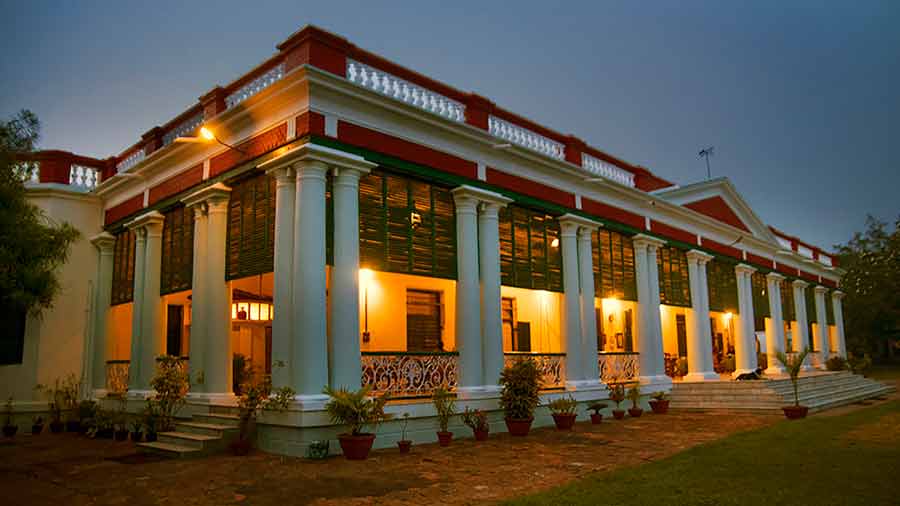The humdrum 130-km drive from Kolkata to Maheshganj Estate, four kilometres away from the town of Nabadwip in Nadia, does not set the stage for the destination. As soon as you swerve past the white-topped red pillars and on to the leafy tract of the 14-acre estate, you are transported to a time long gone by.
The path leads to the sprawling Balakhana House. Fronted by a lawn, the mid-European colonnaded facade stretches out in languid splendour. The house, dating back to 1780, was built by an Italian doctor who sold it to a British indigo planter, Henry Nesbitt Savi. The indigo industry suffered a setback due to synthetic imports and a ban in 1860, and in 1875, the property was bought by prominent zamindars of the region, the Palchoudhuris. Two of the indigo plants still remain on the grounds and some natural indigo blocks have been preserved in an old jar in the house. The house is also often referred to as Neelkuthi, especially by the locals, for its connection to indigo farming.
Steeped in history

Balakhana’s vintage charm is the perfect backdrop for evenings spent listening to historic tales
Wrapped in an old-world laid-back charm, Balakhana’s interiors are elegantly furnished with mahogany bedsteads, vintage cabinets and dainty corner pieces.
The estate is now managed by Ronodhir Palchoudhuri, an affable gentleman ready to share historical anecdotes of the place over steaming cups of Darjeeling tea (fresh from the gardens in North Bengal, owned by the family) in the columned verandah overlooking the grounds or by the fireplace in the cosy lounge.
Maheshganj is steeped in history. Just beyond the estate is an abandoned airstrip where Ronodhir’s father, Ronojit Palchoudhuri, used to fly in with his two-seater Tiger Moth aircraft. A Congress leader in his days, he once flew Netaji Subhas Chandra Bose to the region for a political rally. Over the years, Balakhana had its share of illustrious guests. For Apur Sansar, Satyajit Ray filmed a sequence on the banks of Jalangi river that flows behind the estate and during the filming, stayed in the now-dilapidated family guest house.
Local charms

There are numerous nooks to wind down at Balakhana House, like this verandah
A delightful way to start a day in Balakhana is to pick one of the assorted headgears from the elegant hat-stands in the billiard room, and stroll through the grounds that have litchi orchards and groves of mahogany and mulberry.
After a hearty English breakfast, where the highlight is the redolent mulberry jam made from the fruits growing in the estate, take a day trip to Nabadwip and Mayapur. The towns are important centres of Vaishnavite history in Bengal that dates back to the 15th century to the time of Sri Chaitanya. Savouring the traditional claycraft and fine sweetmeats of Krishnagar can also be added to the itinerary.
For those looking for some downtime, there’s much to explore within the estate and Balakhana House. Enjoy a game of billiards on the 250-year-old Lazarus table or throw a few darts, or snuggle up with a book on a reclining armchair in the colonnaded verandah.

A slow sunset cruise on the Jalongi river that flows behind the estate is an ideal way to end the day
By evening, take a walk to the riverfront of the Jalongi river, which flows about 300 metres behind the estate. A slow cruise on a country boat during sunset is a wonderful way to explore its calm waters as the last rays of the sun gleam on its gentle ripples. And if you spot any of the river dolphins leaping and diving back into the limpid waters, it would be a fine ‘fin’ale.
Sugato Mukherjee is a Kolkata-based photographer and writer whose work has appeared in The Globe and Mail, Al Jazeera and Nat Geo Traveller, among other places. He is the author of a coffee-table book on Ladakh and a book on the sulphur miners of East Java.
